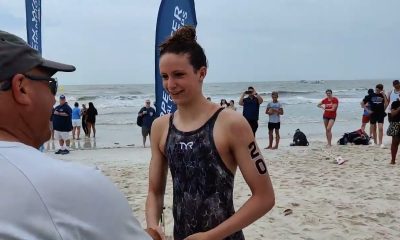NIL
Mitchell Robinson should get more playing time in Game 3
Josh Hart is lobbying for more Mitchell Robinson minutes. After the Knicks fell into an 0-2 hole in the Eastern Conference finals, Hart suggested that the 7-footer see more time. “We have to figure out ways — I think he played [29] minutes — figure out ways if he can play more,” Hart said following […]
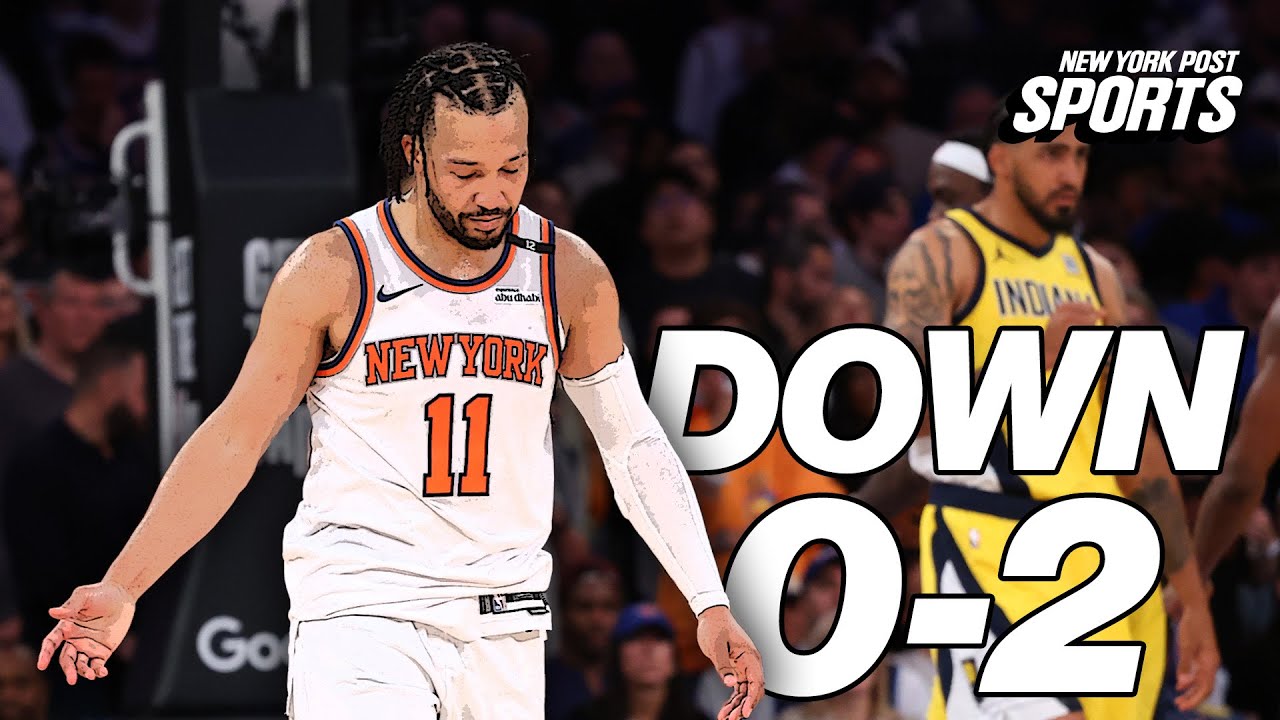
Josh Hart is lobbying for more Mitchell Robinson minutes.
After the Knicks fell into an 0-2 hole in the Eastern Conference finals, Hart suggested that the 7-footer see more time.
“We have to figure out ways — I think he played [29] minutes — figure out ways if he can play more,” Hart said following this 114-109 loss at the Garden. “We’re great with him on [the floor]. We all got to be willing to sacrifice for the betterment of the team.”
The Knicks starters have been outscored by 81 points in the playoffs, and they were again outplayed Friday, digging the Knicks an early 19-9 hole.
They also allowed a 15-7 run to start the third quarter. Coach Tom Thibodeau has been resistant to a shake-up with his first five.
Asked about a potential change after the loss, he said: “We always look at everything.”
He played Robinson a postseason-high 29 minutes in Game 2, and Robinson delivered six points, nine rebounds, three blocks and a team-best plus-six rating.

Game 2 loss to the Pacers on May 23, 2025. Charles Wenzelberg / New York Post
So far in this series, the Knicks have outscored the Pacers by six points when Robinson is on the floor and have been outscored by 14 when he isn’t.
With just over a half-minute left, the Knicks had possession down three.
Jalen Brunson was searching for an open 3-pointer attempt when he opted to give up the ball for a wide open Josh Hart layup that cut the deficit to one.

It left 14.8 seconds on the clock.
“I mean, I was looking for a 3 but I saw him wide open with enough time to kind of play the trap, steal, foul game,” Brunson said. “Obviously, it didn’t go in our favor. We had more than enough time and opportunity to get to where we wanted to get to.”
Aaron Nesmith made two free throws and Brunson was forced into a deep, desperation 3 that was way offoff.
Karl-Anthony Towns sat much of the fourth quarter, logging just five minutes.
He was minus-20 in 28 minutes and struggled on the defensive end all night.
“We got in a hole and then the group that was in there gave us a chance, so we just were riding that,” Thibodeau said. “We were just searching for a way to win.”

NIL
Football Offseason Brings Plenty of Opinions and Ideas About the Mountaineers
Story Links MORGANTOWN, W.Va. – It’s that time of year when lists and opinions have taken over college football. In other words, as my good buddy Jed Drenning loves to say, there’s not a whole lot of hard news happening right now. WVU defensive coordinator Zac Alley was a recent visitor on […]
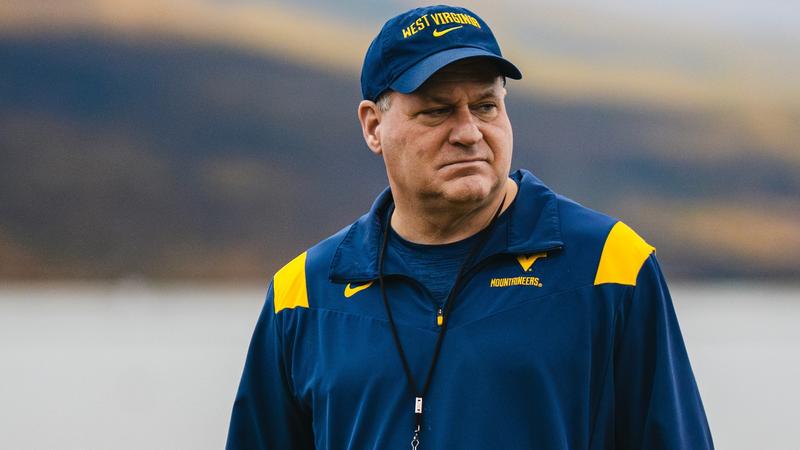
MORGANTOWN, W.Va. – It’s that time of year when lists and opinions have taken over college football. In other words, as my good buddy Jed Drenning loves to say, there’s not a whole lot of hard news happening right now.
WVU defensive coordinator Zac Alley was a recent visitor on the “3 Guys Before The Game” podcast and one of the big takeaways from that interview was his belief that West Virginia can be a “sleeping giant.”
That’s one of the reasons he said he left Oklahoma to coordinate coach Rich Rodriguez‘s Mountaineer defense.
Pro Football Focus has Jacksonville State transfer Cam Vaughn rated as the fourth-highest graded wide receiver in the Big 12 heading into 2025, behind just TCU’s Jordan Dwyer, Kansas’ Bryson Canty and TCU’s Eric McAlister.
That caught some people’s attention.
I noticed a summer ranking of the top 16 Big 12 head coaches from worst to first, and the criteria used was a blending of career history, consistency, winning on the big stage and the ability to develop talent.
I’ll let you Google search that one.
Recruiting news is always popular in June and July as high school players attend camps, visit campuses and begin to narrow down their college choices.
The Mountaineers have landed several commitments during the last week or so.
Rodriguez spent a week in early May visiting different parts of the state as part of the Mountaineer Athletic Club’s Coaches Caravan, which wrapped up in Wheeling on May 12.
He also was a guest last month on the “Triple Option” podcast hosted by Urban Meyer, Mark Ingram II and Rob Stone.
Most of what Coach Rod told them he has already told us during his spring football media availability sessions.
Perhaps the most fascinating part of that interview, however, came near the end of the podcast when Rodriguez was given an opportunity to ask the podcasters a question. What he asked was probably the best question I’ve heard anyone come up with in a long, long time.
“Other than having really good players, what is the common factor to those teams that have been better than everyone else the last two years (during the transfer portal and Name, Image and Likeness era)?” he asked them.
Meyer, a three-time national champion coach who won a Big Ten title during his final season at Ohio State in 2018, answered immediately.
“It’s a no-brainer,” he said. “With this NIL, and what I witnessed what (Michigan) and (Ohio State) have done the last two years, you’ve got grown-ass men in that locker room. My best teams were when I had men, not boys, in my locker room.
“You look at the Wolverines (in 2023) and the Buckeyes (in 2024), and they all came back, so it’s not the 17- and 18-year-olds; you’ve got 21-year-old dudes that have been through the wars,” he said. “As I’m watching these teams, I started reflecting back and my best teams were the same way. I had the (Maurkice) Pounceys and the guys who didn’t put up with any $%#^! The locker room was the locker room.”
Meyer added, “I know Penn State is trying to do the same thing this year because a lot of those kids came back where in the old days, they all left because they had to get paid (in the NFL). Now, they are getting paid (in college).”
What an observation!
The current template for success in the Big 12 has been established in Tempe, Arizona. Second-year coach Kenny Dillingham defied expectations last season by taking a team that was predicted to finish last in the conference to the college football playoffs.
The Sun Devils were one play away from upsetting Texas and advancing to the semifinals after rallying from a 16-point deficit.
Dillingham did it with Sacramento State transfer running back Cam Skattebo, Michigan State transfer quarterback Sam Leavitt and other highly competitive portal players who fit the strong culture that he established during his first season there in 2023.
Here in Morgantown, we’ve heard Rich Rod consistently talk about establishing his culture and then finding players who can fit into it.
He did that during his two seasons at Jacksonville State, and, despite having a completely new team last year, led the Gamecocks to a Conference USA championship during their inaugural season at the FBS level.
Now that he’s back at WVU, 24 transfer players were recently announced, including eight from other power four programs. His coaches signed seven high school and junior college prospects last February, one month after revealing a 29-player January portal class, of which 27 are still here after the spring.
Twenty of the 22 players inherited from Neal Brown’s December signing class are still in the fold, which means there are many more new players than returning ones on the roster right now.
When you add those two portal groups together, that’s 51 new players with some sort of college experience coming to play for the Mountaineers this fall.
Yes, West Virginia’s 2025 roster is new, but it’s not necessarily young.
Last year, Rich Rod got a remodeled Gamecocks roster turned around after an 0-3 start to their season.
“After our first year at Jax State, we had seven or eight players that moved up to power four programs,” he noted. “They got bought, and we knew it was coming. We had 60 new players on last year’s team, and so when we started off 0-3, everyone was kind of panicking, and I’m like, ‘We’re going to be okay. Most of our guys didn’t get here until the summer and it’s taking us a little longer to acclimate them.’
“What I learned from that is we better speed that process up,” Rodriguez added. “Once they got comfortable with our system, they kind of took off.”
Those are comforting words. If anything, Arizona State, and TCU a couple of years ago, taught us not to pay too much attention to preseason rankings.
For those of you old enough to remember Rodriguez’s Mountaineer teams in the early 2000s, not to mention the two he coached at Jacksonville State, he has consistently demonstrated an ability to get his teams better during the season.
And on the “The Triple Option” podcast, Meyer reminded us that counting birthdays can be just as important as counting recruiting stars.
Those are some things to ponder while you are browsing the preseason magazines at the beach this summer.
NIL
Cam Newton was one of CFB's biggest stories since 2000, plus CFB news
Until Saturday Newsletter 
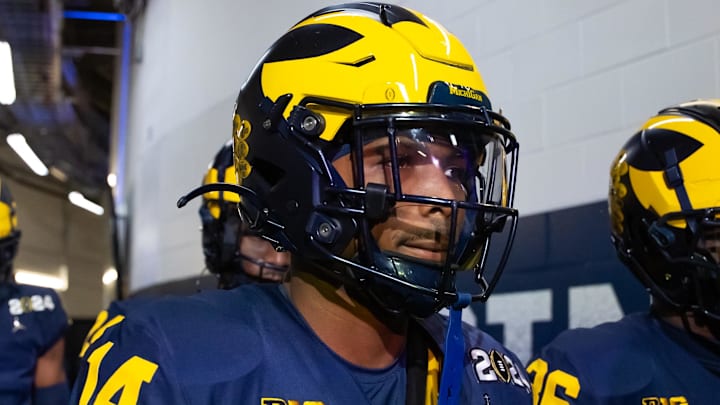


Until Saturday Newsletter 
Today in college football news, Lay’s Valentina & Lime demolishes Doritos Blazin’ Buffalo & Ranch for junk food of the week honors.
Changes: CFB’s especially busy quarter-century
Every quarter-century in college football is busy, to be clear — now I want to do a whole newsletter section on the least consequential such period, because that’d actually be really, really hard — but these 25 years have left massive and often long-awaited marks on the sport’s history.
Last week, Scott Dochterman ranked the 25 most consequential stories since 2000. As you’d expect, the top of the list includes a whole lot of 2020s. It’s been an especially busy decade, and it’s only halfway done. Consider:
- The transfer portal. The Pac-12 starring as Guy Mauled By Bear in “The Revenant.” And the list’s No. 1 storyline: the 2021 onset of NIL, followed by last week’s news that Division I colleges will now be able to directly pay their players actual money, dynamiting the central pillar of the previous century-plus of American collegiate amateurism.
- Scott’s list is certainly not all recent stuff, though. Two events from 2007 (Alabama hiring Nick Saban and the Big Ten launching its own network) rank in the top 10, as does the realignment bonanza of the early 2010s. Overall, this is such a loaded ranking, 2001’s dawn of the modern recruiting-coverage industry only appears at No. 23 — Barely A Five-Star territory, in recruiting-coverage terms.
The only thing I would want to tweak, if I were rearranging these items with push pins on a particle board: moving Cam Newton’s 2010 season up four spots into the top 10, just behind the Big Ten truly launching the modern realignment era around the same time.
The story of Auburn’s quarterback having a father who’d allegedly asked a whole other school for a low-six-figure payment was one of the sport’s biggest pop-culture crossover dramas of the 2010s.
More critically, it might have been the single biggest turning point in the public’s perception of amateurism. Newton and his plight as the smiling face of scandal made a whole lot of people start to think, “Wait … why shouldn’t this kid who’s single-handedly turning a very mediocre team into a national champ get paid for it?”
Newton’s 2010 made more people reconsider the NCAA’s late-2000s treatment of Reggie Bush (No. 12 on Scott’s list). By the time of Johnny Manziel’s 2013 NCAA-baiting (No. 25), the entire thing was starting to feel like a joke everyone was in on, like a house that had always been bound to collapse.
Fast forward, and now it barely registers when Power 4 boosters pay decent quarterbacks 15 or 20 times what a Heisman winner’s family might have requested just 14 years prior.
Remember: For more of The Athletic’s look back at the past 25 years, inspect our rankings of the top 25 teams, top 25 players, top 25 coaches and top 25 games. And here’s that link to the top 25 storylines again.
Quick Snaps

- “He has mused with associates about starting his own, independent version of GameDay, according to sources briefed on discussions. …
- “Last fall, McAfee grew upset about being shown swinging and missing during a segment in which he faced a University of Oklahoma softball pitcher. McAfee, according to sources briefed on the incident, demanded to know the name of the GameDay staff member who put it on the air.”


- “Eight female athletes filed an appeal of the House v. NCAA settlement, arguing that the landmark agreement violates Title IX.” This dispute had long been anticipated.
- “Throughout this case, many involved have pointed to the next big one coming down the pike. Johnson vs. NCAA, which has been moving through the courts for almost six years now, gets into one of the thorniest issues in college sports: employment.”
- “The people in charge are turning quickly to the sport’s next potential rules changes. At the top of the list: moving to a single transfer portal window.”
- As we continue to learn more about what big schools are going to do with their newly allowed $20.5 million allocations, here’s one of several Ohio State details: “Spending $18 million across four sports: football, men’s basketball, women’s basketball and women’s volleyball.”



2025 Countdown: That’s not a Michigan helmet
Until Saturday’s completely format-free 2025 season preview countdown continues today with Conference USA and the MAC, the conferences that usually have the nation’s most and least transient membership rosters, respectively. I decided to pair these two into one edition for a couple reasons:
- They contain all three of this season’s conference realignment changes in FBS. What a tidy way to catch up!
- Almost all of the most enjoyable EA Sports rebuilding projects are usually in these two leagues. Who hasn’t labored to build a little MAC guy into Ohio State’s bully? Last year, my Conference USA alma mater, Kennesaw State, was the FBS newbie and thus one of the game’s most frequently undertaken construction projects. This year, CUSA — forever filling a critical role as the onboarding meeting, spaceship airlock and actual transfer portal — provides two such options.
With all this in mind, let’s bring on The Athletic’s Chris Vannini, who has covered lots of college football things, including smaller schools and The Video Game. How convenient!
Which of the two latest CUSA additions (Delaware and Missouri State) would be more fun as a fixer-upper?
Chris: While both have been top-25 FCS programs, I’m interested in Delaware. While playing an early version of the game, I actually spent a little time with them and really enjoyed their playbook, so that’s a bonus. For those unaware, Joe Flacco’s alma mater looks like Michigan, with blue and yellow winged helmets. The Blue Hens are also the only FBS program in the state of Delaware, so they’re unique. They have a balanced offense that may again rotate quarterbacks who can run and pass. The new Dynasty mode will encourage more local recruiting by making distant recruiting visits cost more, so get ready to recruit a lot of New Jersey.
Same question for the MAC. Seems like UMass rejoining after a decade away makes the Minutemen an enticing project?
UMass is another in a long list of former FCS national champions who have moved up to FBS, but they’ve had no success. People around the program earnestly believe it’ll be different now that they’ve started to fund the program the way it should be, and they’ll be near the top of the MAC financially this time around. On the field, UMass brings in dual-threat Yale quarterback Grant Jordan, who might be able to make some waves in the MAC. But it’s also a hard team to predict, with so much portal turnover during a coaching change.
Look at that, sneaking in actual season preview content. As far as Who’s Gonna Win goes, Liberty will surely again be CUSA’s clear favorite* despite losing 2023 league MVP quarterback Kaidon Salter to Colorado. Potential replacement Ethan Vasko played the last two years at Coastal Carolina, which happens to be the school his new head coach, Jamey Chadwell, had just left.
Advertisement
* Last year, Jacksonville State was picked third in the league in the conference’s preseason poll, then beat Western Kentucky in the league title game. Both now enter the season in a big pile of second-tier contenders. Weird way of putting it, I guess. They’re all 0-0.
In the MAC, expect Toledo to be the pick for what feels like the billionth time, though the Rockets have just two league titles since 2004. That sounds way more rude than I’d meant. They’ve been super consistent! So many near-misses! Feel like I’ve typed this exact paragraph annually for a decade now. Sorry.
Also expect some first-place MAC preseason votes for defending champ Ohio, defending runner-up Miami (Ohio) and NIU — the country’s second-best team last year, based on scoring margin in games against Notre Dame. A sleeper pick based on roster stability, though that’s a very relative concept in the MAC: Buffalo.
Your turn. This week’s survey: Whether you’re a gamer or not, which team in all of college football would be the most fun to turn into a CFP contender? I’ll run some of your brilliant ideas next week.
Have a good weekend, and untilsaturday@theathletic.com is how you can email me about any of this. Most of you usually just email me about the non-sequitur intros. Thank you either way.
(Top photo: Kevin C. Cox/Getty Images)
NIL
Diego Pavia calls out Michigan football’s use of NIL: ‘They should be winning more’
During a recent appearance on Bussin’ With The Boys, Vanderbilt quarterback Diego Pavia was stirring the pot, taking shots at numerous programs across the college football landscape. Pavia’s critiques weren’t limited to Vanderbilt’s rivals, either. Pavia also poked fun at the alma maters of podcast co-hosts Will Compton and Taylor Lewan. Specifically, Pavia took aim […]
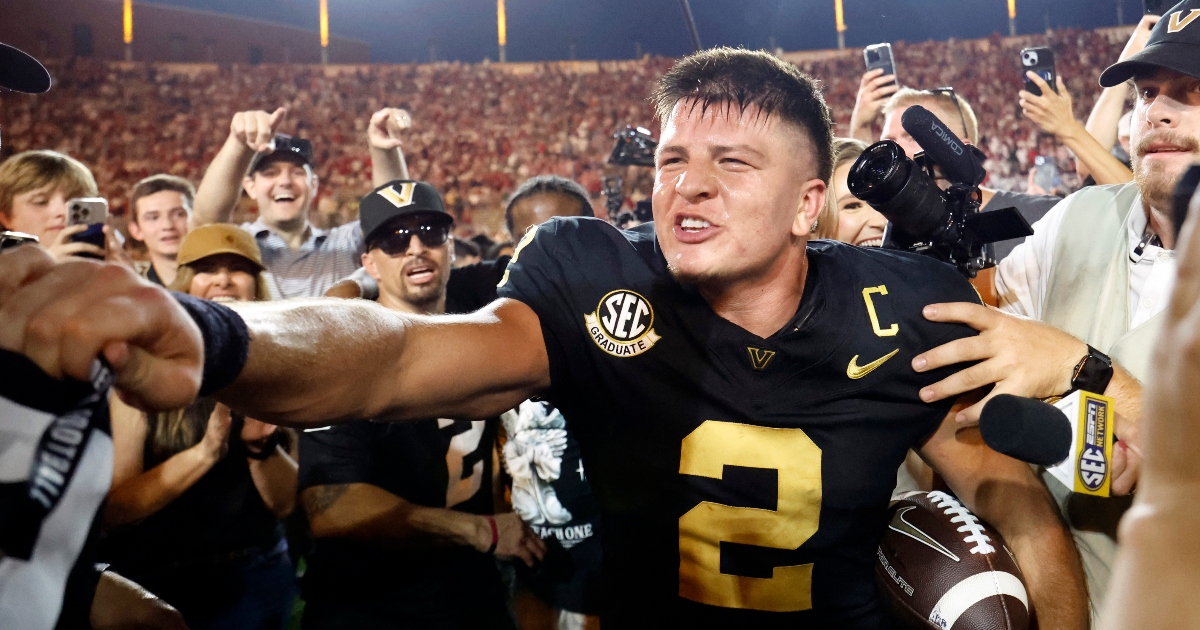
During a recent appearance on Bussin’ With The Boys, Vanderbilt quarterback Diego Pavia was stirring the pot, taking shots at numerous programs across the college football landscape. Pavia’s critiques weren’t limited to Vanderbilt’s rivals, either.
Pavia also poked fun at the alma maters of podcast co-hosts Will Compton and Taylor Lewan. Specifically, Pavia took aim at Lewan’s alma mater, Michigan, claiming that the Wolverines should win more with the amount of NIL money they have available.
“Michigan’s a great school, but they should be winning more than they are with the cap that they got,” Pavia said. “Like, Dave Portnoy donates to Michigan. I know their NIL is through the roof. Should you not win?”
Lewan didn’t shy away from defending his school. He quickly pointed to other issues that prevented Michigan from having its typical success last season.
“We won seven games last year with throwing turned off,” Lewan said. “If you’re if you’re talking about, ‘Hey, there’s multiple phases to an offense.’ You’re going to take off probably like 50% of an offense and still win seven games and just knock down, drag them out three yards in a cloud of dust.
“Tough year. We win the national championship. You must’ve forgot about that in 2024 and then we go into this past year. Yeah, we had some difficulties at quarterback. Not gonna come at the boys at all. We had a hard time tossing the ball over the yard. It was bad. It was not great. Now we got this cat, Bryce Underwood.”
In fairness to Pavia, he admitted that he expected big things from Underwood. Nonetheless, Michigan fans might not pay as much attention to the 2024 SEC Newcomer of the Year’s compliments, as they do to his glaring critiques.
Of course, it’ll also be difficult for Wolverines diehards to deny that Michigan’s 2024 campaign was underwhelming. Michigan entered the season ranked as the No. 9 team in the country. The team didn’t finish the year in the AP Top 25.
As Lewan mentioned, much of Michigan’s struggles can be attributed to the team’s lack of a passing game. The Wolverines averaged 129.1 passing yards per game, the least of any Power Four team in the country.
If Michigan had had a quarterback like Diego Pavia taking snaps, perhaps head coach Sherrone Moore’s debut campaign at the helm would’ve left fans with much more to celebrate. Alas, Michigan will have plenty of opportunities to silence Pavia in the upcoming season.
NIL
Football Offseason Brings Plenty of Opinions and Ideas About the Mountaineers
Story Links MORGANTOWN, W.Va. – It’s that time of year when lists and opinions have taken over college football. In other words, as my good buddy Jed Drenning loves to say, there’s not a whole lot of hard news happening right now. WVU defensive coordinator Zac Alley was a recent visitor on the “3 Guys […]
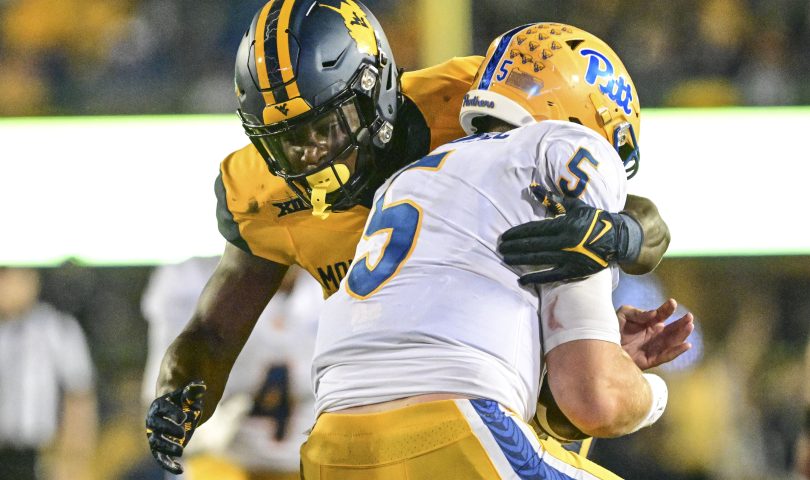


MORGANTOWN, W.Va. – It’s that time of year when lists and opinions have taken over college football. In other words, as my good buddy Jed Drenning loves to say, there’s not a whole lot of hard news happening right now.
WVU defensive coordinator Zac Alley was a recent visitor on the “3 Guys Before The Game” podcast and one of the big takeaways from that interview was his belief that West Virginia can be a “sleeping giant.”
That’s one of the reasons he said he left Oklahoma to coordinate coach Rich Rodriguez‘s Mountaineer defense.
Pro Football Focus has Jacksonville State transfer Cam Vaughn rated as the fourth-highest graded wide receiver in the Big 12 heading into 2025, behind just TCU’s Jordan Dwyer, Kansas’ Bryson Canty and TCU’s Eric McAlister.
That caught some people’s attention.
I noticed a summer ranking of the top 16 Big 12 head coaches from worst to first, and the criteria used was a blending of career history, consistency, winning on the big stage and the ability to develop talent.
I’ll let you Google search that one.
Recruiting news is always popular in June and July as high school players attend camps, visit campuses and begin to narrow down their college choices.
The Mountaineers have landed several commitments during the last week or so.
Rodriguez spent a week in early May visiting different parts of the state as part of the Mountaineer Athletic Club’s Coaches Caravan, which wrapped up in Wheeling on May 12.
He also was a guest last month on the “Triple Option” podcast hosted by Urban Meyer, Mark Ingram II and Rob Stone.
Most of what Coach Rod told them he has already told us during his spring football media availability sessions.
Perhaps the most fascinating part of that interview, however, came near the end of the podcast when Rodriguez was given an opportunity to ask the podcasters a question. What he asked was probably the best question I’ve heard anyone come up with in a long, long time.
“Other than having really good players, what is the common factor to those teams that have been better than everyone else the last two years (during the transfer portal and Name, Image and Likeness era)?” he asked them.
Meyer, a three-time national champion coach who won a Big Ten title during his final season at Ohio State in 2018, answered immediately.
“It’s a no-brainer,” he said. “With this NIL, and what I witnessed what (Michigan) and (Ohio State) have done the last two years, you’ve got grown-ass men in that locker room. My best teams were when I had men, not boys, in my locker room.
“You look at the Wolverines (in 2023) and the Buckeyes (in 2024), and they all came back, so it’s not the 17- and 18-year-olds; you’ve got 21-year-old dudes that have been through the wars,” he said. “As I’m watching these teams, I started reflecting back and my best teams were the same way. I had the (Maurkice) Pounceys and the guys who didn’t put up with any $%#^! The locker room was the locker room.”
Meyer added, “I know Penn State is trying to do the same thing this year because a lot of those kids came back where in the old days, they all left because they had to get paid (in the NFL). Now, they are getting paid (in college).”
What an observation!
The current template for success in the Big 12 has been established in Tempe, Arizona. Second-year coach Kenny Dillingham defied expectations last season by taking a team that was predicted to finish last in the conference to the college football playoffs.
The Sun Devils were one play away from upsetting Texas and advancing to the semifinals after rallying from a 16-point deficit.
Dillingham did it with Sacramento State transfer running back Cam Skattebo, Michigan State transfer quarterback Sam Leavitt and other highly competitive portal players who fit the strong culture that he established during his first season there in 2023.
Here in Morgantown, we’ve heard Rich Rod consistently talk about establishing his culture and then finding players who can fit into it.
He did that during his two seasons at Jacksonville State, and, despite having a completely new team last year, led the Gamecocks to a Conference USA championship during their inaugural season at the FBS level.
Now that he’s back at WVU, 24 transfer players were recently announced, including eight from other power four programs. His coaches signed seven high school and junior college prospects last February, one month after revealing a 29-player January portal class, of which 27 are still here after the spring.
Twenty of the 22 players inherited from Neal Brown’s December signing class are still in the fold, which means there are many more new players than returning ones on the roster right now.
When you add those two portal groups together, that’s 51 new players with some sort of college experience coming to play for the Mountaineers this fall.
Yes, West Virginia’s 2025 roster is new, but it’s not necessarily young.
Last year, Rich Rod got a remodeled Gamecocks roster turned around after an 0-3 start to their season.
“After our first year at Jax State, we had seven or eight players that moved up to power four programs,” he noted. “They got bought, and we knew it was coming. We had 60 new players on last year’s team, and so when we started off 0-3, everyone was kind of panicking, and I’m like, ‘We’re going to be okay. Most of our guys didn’t get here until the summer and it’s taking us a little longer to acclimate them.’
“What I learned from that is we better speed that process up,” Rodriguez added. “Once they got comfortable with our system, they kind of took off.”
Those are comforting words. If anything, Arizona State, and TCU a couple of years ago, taught us not to pay too much attention to preseason rankings.
For those of you old enough to remember Rodriguez’s Mountaineer teams in the early 2000s, not to mention the two he coached at Jacksonville State, he has consistently demonstrated an ability to get his teams better during the season.
And on the “The Triple Option” podcast, Meyer reminded us that counting birthdays can be just as important as counting recruiting stars.
Those are some things to ponder while you are browsing the preseason magazines at the beach this summer.
NIL
UW Adds Marley Teasley To Roster
Story Links SEATTLE – Washington softball head coach Heather Tarr has announced the signing of infielder Marley Teasley to the roster. Teasley becomes the Huskies’ eighth freshman on the 2026 roster joining Melody Acevedo, Kaycie Burdick, Ally Hetzel, Zuri Patterson, Mila Reddy, Amira Rodriguez and Allie Thomsen. “Marley is the […]
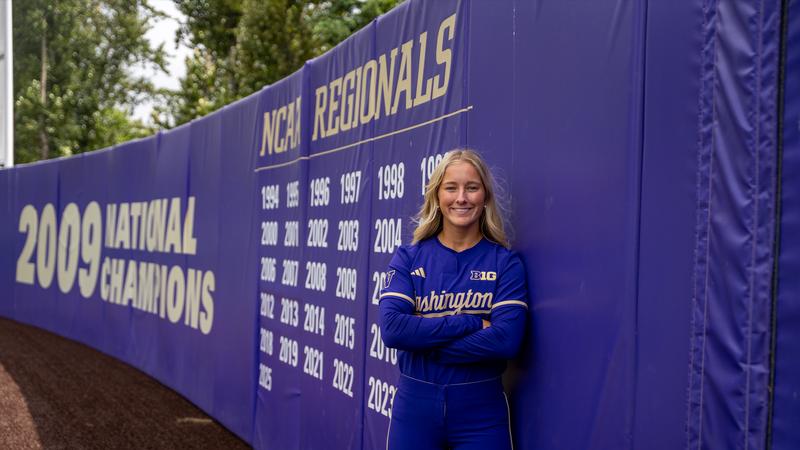
SEATTLE – Washington softball head coach Heather Tarr has announced the signing of infielder Marley Teasley to the roster.
Teasley becomes the Huskies’ eighth freshman on the 2026 roster joining Melody Acevedo, Kaycie Burdick, Ally Hetzel, Zuri Patterson, Mila Reddy, Amira Rodriguez and Allie Thomsen.
“Marley is the exact kind of student-athlete we pursue at Washington, tough, talented and driven to compete at the highest level,” Tarr said. “She’s a three-sport standout, excelling in softball, basketball and track & field and a proven winner who hit 23 home runs this season.”
A four-year starter at Weatherford High School in softball and basketball, Teasley earned district honors in both sports. On the diamond, Teasley held a .450 average, 190 hits, 48 doubles, seven triple, 43 home runs and 163 RBI in her high school career.
Outside of softball, Teasley joined the 1,000-point club in basketball and placed sixth at State in shot put.
She was named Oklahoma Player of the Year by MaxPreps while helping Weatherford to the 4A State Championship while batting .505 with 23 home runs – which tied the Oklahoma single-season record – and 44 RBI. In the circle she posted a 0.82 ERA with a 21-1 record in addition to 218 strikeouts. In addition, Teasley earned NFCA High School Player of the Week honors and was the 2024 Prep Nation Player of the Year.
Late this summer, Teasley will compete alongside fellow incoming Huskies at the Alliance All-Star Game, July 20. She will be joined by Thomsen and Acevedo.
“She brings passion and toughness to everything she does, and her versatility on the field is matched by her determination in the classroom,” Tarr added. “Marley comes from a strong family as the youngest of four, and it’s clear she was raised to compete. She’s our type of Husky through and through.”
While at Washington, Teasley plans on majoring in nutritional science.
For more information on the UW softball team, follow @UWSoftball on X and Instagram.
NIL
From Nick Saban at Alabama to Jeff Brohm at Purdue: College football’s top 25 coaching hires this century
Every college football program has that one hire. It’s the moment that changes everything and kicks off an unprecedented run of success. It can transform an athletic department and show both donors and players what’s possible at a school. The race to find that hire has never been more difficult. For example, Florida has hired […]
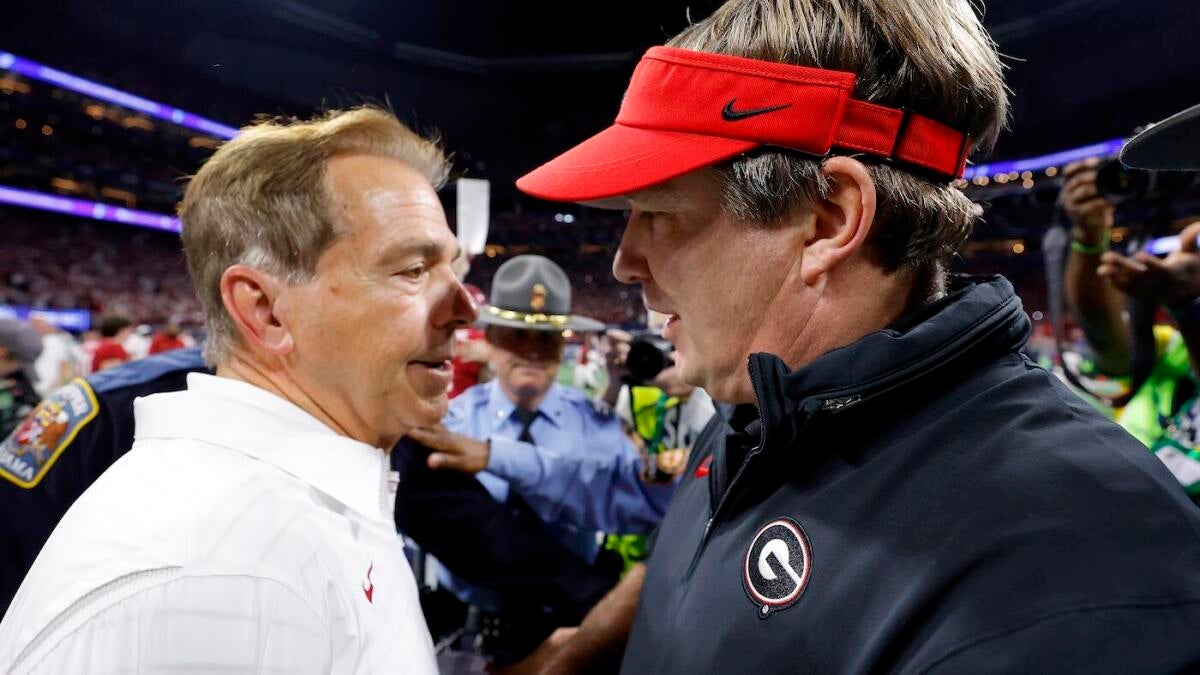
Every college football program has that one hire. It’s the moment that changes everything and kicks off an unprecedented run of success. It can transform an athletic department and show both donors and players what’s possible at a school.
The race to find that hire has never been more difficult. For example, Florida has hired six coaches in the 21st century alone. Tennessee hired five in 12 years. USC hired three straight Pete Carroll disciples to try and recapture the magic. Countless buyout dollars have flown out the windows in search of the next big thing. But when the right coach has found the right situation, magic happens.
How to fix the College Football Playoff: Format, schedule changes necessary with expansion on the horizon
Tom Fornelli
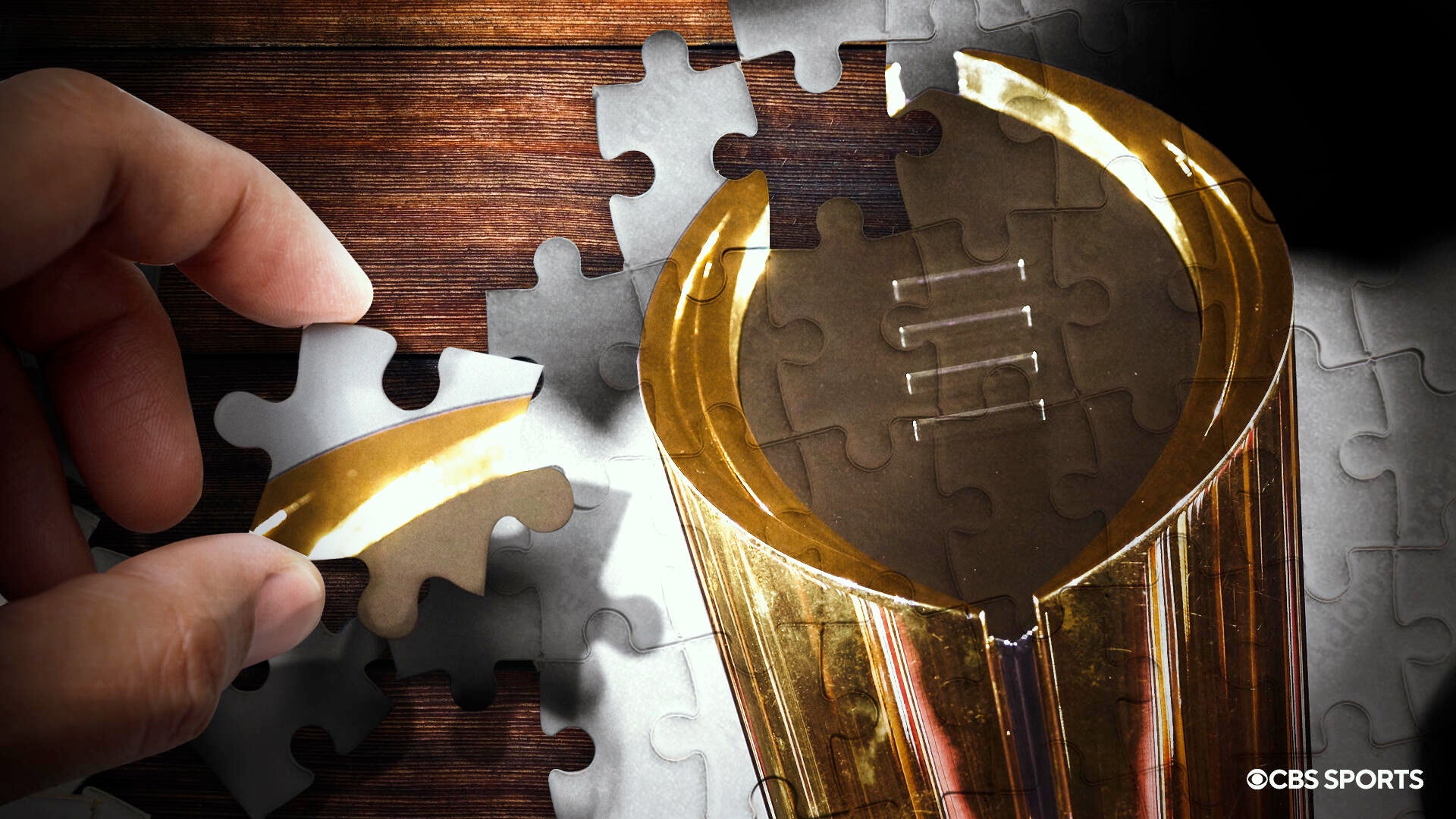
For a list like this, laying out criteria is critical. More than anything, being transformative is valued. There are coaches who defined a place, or even helped elevate a program long term. Winning big is valued — the top five are all multi-time national champions — but it’s not the only qualification. Success at Purdue looks different than that at Alabama.
Additionally, a coach is only eligible to be listed on here once. Otherwise, multiple champions like Nick Saban and Urban Meyer very well could take up all of the top five spots on their own. The list will also consider coaches who started their head coaching tenure in 2000 or later. That means a few legendary coaches, like Oklahoma’s Bob Stoops, narrowly miss the cut.
With that said, here are the top 25 coaching hires of the 2000s, from national champions to program builders.

25. Jeff Traylor, UTSA
First season: 2020
Notable accomplishments: 2 CUSA titles, 46-20 record, five straight winning seasons
When Traylor took over at UTSA, one of the youngest programs in the FBS, the Roadrunners had not posted a winning record since their transitional season. Right away, Traylor turned the program into a winner. By Year 2, UTSA was the best team in Conference USA. The Roadrunners blazed their way to a 22-2 league mark in three seasons between CUSA and the AAC. Last year was a transitional one, but Traylor has changed everything about UTSA during his tenure.

24. Jeff Brohm, Purdue
First season: 2017
Notable accomplishments: 4 bowl appearances, Big Ten West title
Brohm has done incredible work everywhere he’s gone, but the success he had at Purdue was downright silly. The program had two total bowl appearances in the decade after Joe Tiller was pushed out, but Brohm helped them get back to their winning ways with three winning seasons and four bowl appearances. He posted 17 wins in his final two seasons, the most since Tiller’s first two years in West Lafayette.

First season: 2019
Notable accomplishments: Sun Belt title, 2 Sun Belt East titles, 22-3 record in two years
Chadwell was simply a winner and synonymous with the state of South Carolina when Joe Moglia brought him onto his staff at an upstart program. In 2019, he earned the full-time head coaching job and embarked on an incredible run. After a 5-7 rebuilding season, Chadwell delivered a 31-6 mark in three seasons with two appearances in the Sun Belt Championship Game. The program’s most iconic moment was a last-second victory against Zach Wilson’s BYU. At Liberty, Chadwell has kept the train rolling.

First season: 2010
Notable accomplishments: 1 national championship, 3 ACC titles, five straight 10-win seasons
Fisher is one of the most complicated names on the list. His success at Florida State was elite, headlined by a 2013 team that ranks among the best in the history of the sport. He also faltered near the end and his whiffs helped set up a disastrous half-decade of FSU football after he left. Still, his early success was impressive enough that he deserves a spot on the list, and he helped prove Florida State could be a blue-chip program without Bobby Bowden.

21. Lane Kiffin, Ole Miss
First season: 2020
Notable accomplishments: 44-18 record, Ole Miss single-season win record
Few would call Kiffin’s tenure as quiet and consistent, but his Rebels have been exactly that. The Rebels have posted 10 wins in three of the past four years, including a school record 11 victories in 2023. Perhaps most impressive has been Kiffin’s flexibility when it comes to building rosters, from leaning on quarterbacks like Jaxson Dart to building fearsome defensive fronts behind Walter Nolen and running the ball with Quinshon Judkins. Kiffin was all hype early in his career; now, he’s all results.
Getty Images

20. Willie Fritz, Tulane
First season: 2016
Notable accomplishments: AAC title, Cotton Bowl title, 23 wins in two years
Fritz found success at levels from JUCO to FCS. At Tulane, however, is where he proved ready for the big stage. He took over a program with only one bowl appearance in a decade and quickly turned them into a consistent winner, reaching five bowls in six years. More impressively, he produced two of the best teams in program history in 2022-23, posting a 23-5 record and beating USC in the Cotton Bowl. But perhaps most importantly, he elevated the job to such an extent that Tulane was able to poach Jon Sumrall from Troy.

First season: 2010
Notable accomplishments: 2 CFP appearances, national runner-up, Notre Dame wins leader, 113-40 record
Few coaches in the history of college football have achieved Kelly’s level of consistency. The Massachusetts native worked his way up from Division II national champ at Grand Valley State to Central Michigan and Cincinnati before Notre Dame called. It took only three years to reach the BCS National Championship Game. Kelly led the Irish to multiple playoff appearances and three AP top five finishes. He passed Knute Rockne in all-time wins, and also brought Marcus Freeman onto his staff.

First season: 2011
Notable accomplishments: 3 Pac-12 titles, 5 Pac-12 North titles, 5 10-win seasons in 6 years, 2 Rose Bowl wins
Jim Harbaugh deserves credit for building Stanford, but Shaw was the one who maximized it. The longtime NFL assistant was promoted from offensive coordinator to head coach in 2011 and rattled off one of the most impressive runs of the 2010s. Stanford went an absurd 64-17 in his first six seasons with three conference championships and four major bowl appearances. The program produced numerous legendary players, including Andrew Luck and Christian McCaffrey. Shaw’s run ultimately ended as college football’s NIL/transfer era started; it’s unclear whether any coach could have survived the paradigm shift at Stanford.

17. Matt Rhule, Baylor
First season: 2017
Notable accomplishments: Flipping from 11 losses to 11 wins in only two years
Rhule had more success at Temple, but the job he did at Baylor is remarkable. The program was fresh off the disastrous Title IX scandal that ended the Art Briles era and was teetering on the brink. Rhule came in, raillied the fanbase and helped lead one of the best short-term turnarounds of the 21st century. The Bears landed back in the Big 12 Championship Game in his third season, and his recruits were the core of Baylor’s historic 2021 campaign as well. The only thing preventing Rhule from being higher is his short three-year stint before heading to the Carolina Panthers.

16. Luke Fickell, Cincinnati
First season: 2017
Notable accomplishments: 2 AAC titles, only Group of Five playoff appearance, 57-18 record
Fickell is as Ohio as Ohio gets and managed to use his superpower to carry Cincinnati into the Power Four. The longtime Ohio State assistant was a sensational evaluator and developer, ultimately helping a team of overlooked recruits develop into a powerhouse with four straight AP Top 25 finishes. The peak was a 2021 appearance in the College Football Playoff, which helped set the stage for the Bearcats to join the Big 12 in 2023. After a transitional first season, Fickell posted an absurd 53-10 record in five seasons.
Getty Images

First season: 2016
Notable accomplishments: Iowa State wins leader, seven bowl games, Iowa State single-season win record
A successful MAC coach with some upside, Campbell was a fairly traditional hire for a Midwestern program. Instead, he has delivered one of the most underrated runs in college football history. Prior to Campbell, the last time the program had three straight winning seasons was 1925-27. He posted five straight winning seasons and seven in nine years, including a school record 11 wins in 2024. If Campbell can eventually break through and win the program’s first conference title since 1912, he’d easily slide into the top 10. And most scary: he’s only 45.

First season: 2014
Notable accomplishments: Big Ten title, CFP appearance, four NY6 bowl wins, 101-42 record
There’s been so much conversation about what Franklin hasn’t done that the sport at large has taken for granted what he’s accomplished. Franklin took over a rebuilding Penn State program and quickly brought them back to the limelight, posting three AP top 10 finishes in a four-year stretch. After a reshuffling around the pandemic, Franklin has reached major bowls in three straight years, and fell narrowly in the national semifinals to Notre Dame. At a program that was previously defined by one coach, Franklin ensured Penn State remained a national power.

First season: 2000
Notable accomplishments: Big 12 South title, single-season win record, 10 straight winning seasons, five AP Top 25 finishes
The wins and success stand apart for Leach, especially playing in perhaps the sport’s toughest division for most of the run. But even more than on-field success, Texas Tech became the center of college football thanks to Leach’s revolutionary Air Raid offense. An absurd number of great quarterbacks and offensive coordinators flowed through Lubbock. There were eight future FBS head coaches on Leach’s 2003 staff alone. He gave Texas Tech an identity that it still leans into today.

12. Kyle Whittingham, Utah
First season: 2005
Notable accomplishments: 4 Pac-12 South titles, 2 Pac-12 titles, Mountain West title, 167-86 record, 2 BCS bowl wins
There’s a collection of legendary internal hires in college football history, and Whittingham belongs near the top. He sometimes gets slight criticism for taking over a 13-0 powerhouse that Urban Meyer left behind, but Whittingham built a program in his own image. He led Utah to a No. 2 finish in the AP Top 25 in 2008 and brought enough sustained success to earn the Utes a Pac-12 invitation. After some growing pains in the new league, Utah hit its stride in the final years of the Pac-12, winning back-to-back conference titles. The caliber of the job has been transformed because of Whittingham’s long-term impact.

11. Chip Kelly, Oregon
First season: 2009
Notable accomplishments: National runner-up, 3 Pac-12 titles, three AP top 5 finishes, 46-7 record
Frankly, it’s remarkable that Kelly was Oregon’s head coach for only four years, even considering his success as a coordinator. But when it comes to transformative tenures, Kelly’s run ranks among the best. The Ducks surged into national prominence with three straight top-four finishes, including a trip to the 2010 national championship game. Kelly also built the foundation for the 2014 team that reached the title game behind Marcus Mariota. He helped establish Oregon as a true national power — in both substance and brand.
Getty Images

First season: 2007
Notable accomplishments: 3 Big Ten titles, 7 AP Top 25 finishes, CFP appearance, 114-57 record
Is Dantonio one of the most underappreciated coaches of the 21st century? The former Nick Saban and Jim Tressel assistant took over a Michigan State program with just one 10-win season in 40 years and turned it into a Big Ten powerhouse. The Spartans finished in the AP top 15 six times over an eight-year stretch, including an astonishing run of No. 3, No. 5 and No. 6 finishes in consecutive seasons. Even more impressively, Michigan State won Big Ten titles over teams led by Tressel and Urban Meyer and posted five 11-win seasons during Dantonio’s tenure.

First season: 2006
Notable accomplishments: 5 conference titles, Boise State wins leader, 92-12 record, four AP top 10 finishes
It’s an oversimplification to say Chris Petersen made Boise State, as both Dirk Koetter and Dan Hawkins helped push the program into the national spotlight. But Petersen’s tenure transformed Broncos into one of the defining programs of the 2000s. He led a 13-0 team to a Fiesta Bowl win and an AP top five finish in his first year, and posted four top 10 finishes overall. He didn’t win fewer than 10 games in a season until his last year at Boise — after which he took Washington to the College Football Playoff. To this day, Petersen remains a defining figure in Boise State history.

First season: 2005
Notable accomplishments: Big 12 title, 18 consecutive winning seasons, 10 AP Top 25 finishes, 169-88 record
There are almost no words that can properly contextualize what Gundy accomplished at Oklahoma State. He has nearly tripled the second-place coach for most wins in program history and has the best winning percentage of any OSU coach since 1933. Gundy posted a remarkable 18 consecutive winning seasons with 10 AP Top 25 finishes. The only knock? He truly was not able to compete with rival Oklahoma, posting a 4-15 record against the Sooners. With a few more Bedlam skins on the wall, the Cowboys probably would have half a dozen Big 12 titles instead of just one.

7. Gary Patterson, TCU
First season: 2000
Notable accomplishments: 6 conference titles, TCU wins leader, 181-79 record, six AP top 10 finishes
Few things are more impressive than existentially changing the state of a program. Patterson was so successful at TCU that the school statue was built outside the stadium while he was still actively coaching. The program went on a sensational run in the Group of Five, posting seven 11-win seasons in nine years in CUSA and the Mountain West. Then, he collected three 11-win seasons in four years in the Big 12 to cement his legacy as one of the best ever. Without Patterson, TCU probably isn’t in the Big 12.

6. Jim Harbaugh, Michigan
First season: 2015
Notable accomplishments: National championship, 3 Big Ten titles, 86-25 record
Harbaugh’s tenure at Stanford would easily deserve a spot on this list too, but getting Michigan back to the national stage will be his legacy. Michigan’s prodigal son returned to the program from the NFL and quickly delivered three 10-win seasons in four years. However, his best moments came after the pandemic when he revamped his roster and delivered three straight Big Ten titles. The program peaked with its first outright national championship since 1948. Harbaugh will go down as one of the greatest football coaches of all time, regardless of level.
Getty Images

5. Kirby Smart, Georgia
First season: 2016
Notable accomplishments: 2 national championships, 3 SEC titles, 105-19 record
We’re now getting into the territory of coaches with multiple national championships, and Smart is perhaps best positioned to join Nick Saban as the only coach with more than two. Smart has created the closest thing we have to a new Alabama, rattling off eight straight AP top seven finishes with consecutive national championships. The only thing keeping Smart slightly lower on this list than the top four is that he took over a Georgia program that was painfully close to reaching the promised land under Mark Richt. All four of the other situations were bleaker. In the next decade, though, Smart can easily elevate himself to No. 2.

4. Pete Carroll, USC
First season: 2001
Notable accomplishments: 2 national championships, 7 Pac-10 titles, 97-19 record, 2 Heisman Trophy winners
Carroll was not USC’s first choice when he was hired. He had runs as head coach of the New England Patriots and New York Jets in the 1990s, but spent the 2000 season away from the field after getting fired. He built a legitimate recruiting fence around Southern California and helped return the Trojans to national prominence. He produced the first Heisman-winning teammates since Army in the 1940s and captured a pair of AP national titles. An indicator of Carroll’s success: USC hired a series of former Carroll assistants as head coach in an attempt to recapture the magic.

3. Dabo Swinney, Clemson
First season: 2009
Notable accomplishments: 2 national championships, 9 ACC titles
Swinney isn’t the only coach on this list with multiple national championships, but his rise is nothing short of magical. A former wide receivers coach on Tommy Bowden’s staff, Swinney was one of the least experienced hires on this list when he took over. All he did over the next 15 years was transform Clemson into a national powerhouse. Before his tenure, the Tigers had just one national title and six top-10 finishes; Swinney surpassed both marks on his own. There are fair questions about whether he can return Clemson to the mountaintop in a new era, but those are champagne problems. His hire remains one of the boldest and best swings a program has ever taken.

2. Urban Meyer, Florida
First season: 2005
Notable accomplishments: 2 national championships, 2 SEC titles, 65-15 record
Meyer was always going to have a high spot on this list. The only debate surrounds which of his hirings stands apart as the best. Frankly, if evaluated separately, Meyer’s stints at Utah, Florida and Ohio State could all rank as top 10 hires of the 21st century. However, his five-year tenure at Florida helped cement him as a Hall of Fame coach with three 13-1 records in six seasons behind legendary quarterback Tim Tebow. Meyer helped create a monstrous recruiting machine and produced countless NFL players at Florida. If not for No. 1 on the list, he would be considered the best overall coach of the 21st century. Instead, he had to settle for silver.

1. Nick Saban, Alabama
First season: 2007
Notable accomplishments: 6 national titles, 9 SEC titles, 201 wins
Could there be any other answer? Saban was so successful for so long, people forget the mess he inherited at Alabama. The program had two outright SEC titles in the 25 years between Paul “Bear” Bryant’s retirement and Saban’s hiring. He rattled off nine such titles in 17 seasons at Alabama. He also won six national titles at the school — the most by any coach in history. Saban’s Alabama defined the 21st Century in every way, from its on-field success to reworking how every peer program approached recruiting and development. Saban was perhaps the single greatest hire in the history of college football.
-

 College Sports2 weeks ago
College Sports2 weeks agoIU basketball recruiting
-

 Health2 weeks ago
Health2 weeks agoOregon track star wages legal battle against trans athlete policy after medal ceremony protest
-

 Professional Sports2 weeks ago
Professional Sports2 weeks ago'I asked Anderson privately'… UFC legend retells secret sparring session between Jon Jones …
-

 Professional Sports2 weeks ago
Professional Sports2 weeks agoUFC 316 star storms out of Media Day when asked about bitter feud with Rampage Jackson
-

 Rec Sports3 weeks ago
Rec Sports3 weeks agoScott Barker named to lead CCS basketball • SSentinel.com
-

 High School Sports2 weeks ago
High School Sports2 weeks agoParents Speak Out As Trans Pitcher Throws Shutout In MN State Quarterfinals
-

 High School Sports2 weeks ago
High School Sports2 weeks agoThe Arizona Daily Star's top high school athletes, coaches and moments of the 2024
-

 Rec Sports3 weeks ago
Rec Sports3 weeks agoJ.W. Craft: Investing in Community Through Sports
-

 Sports3 weeks ago
Sports3 weeks agoNotre Dame, Oregon highlight CSU volleyball opponents in 2025
-

 Rec Sports2 weeks ago
Rec Sports2 weeks ago2x NBA All-Star Reacts to Viral LeBron James Statement










